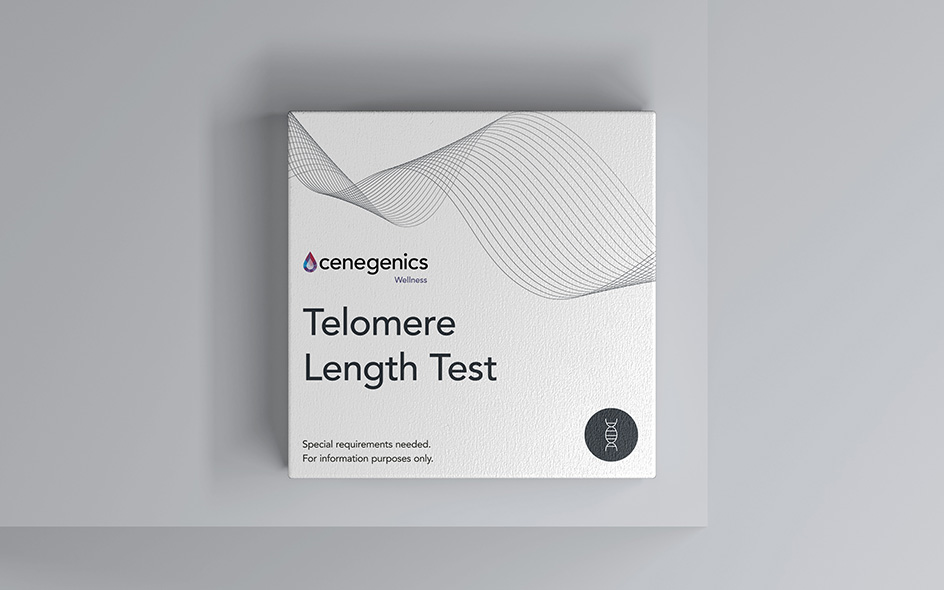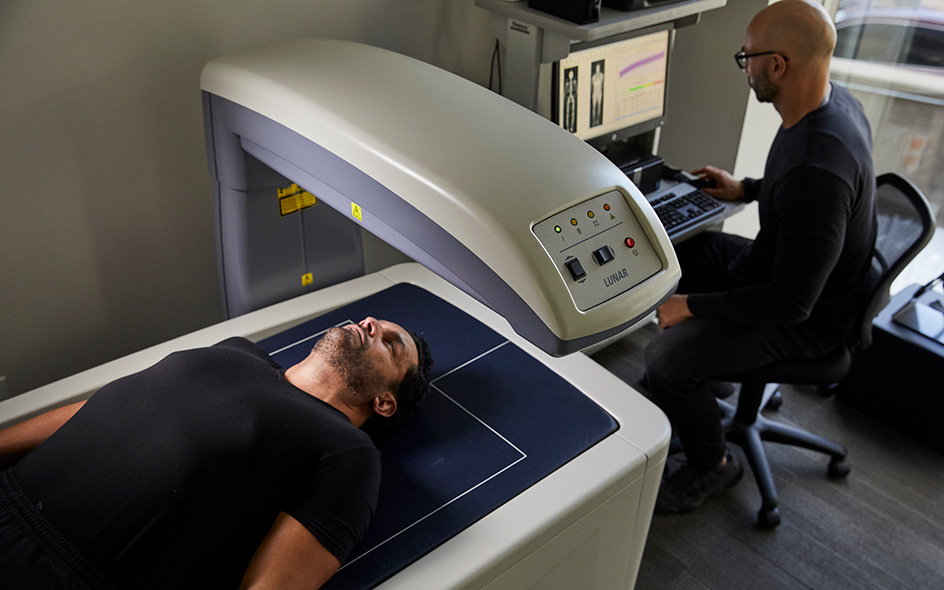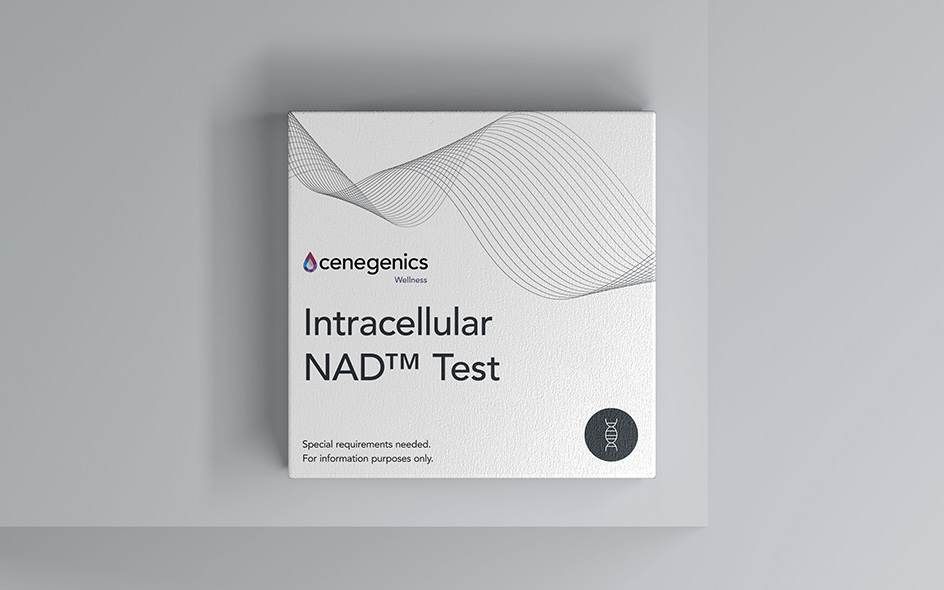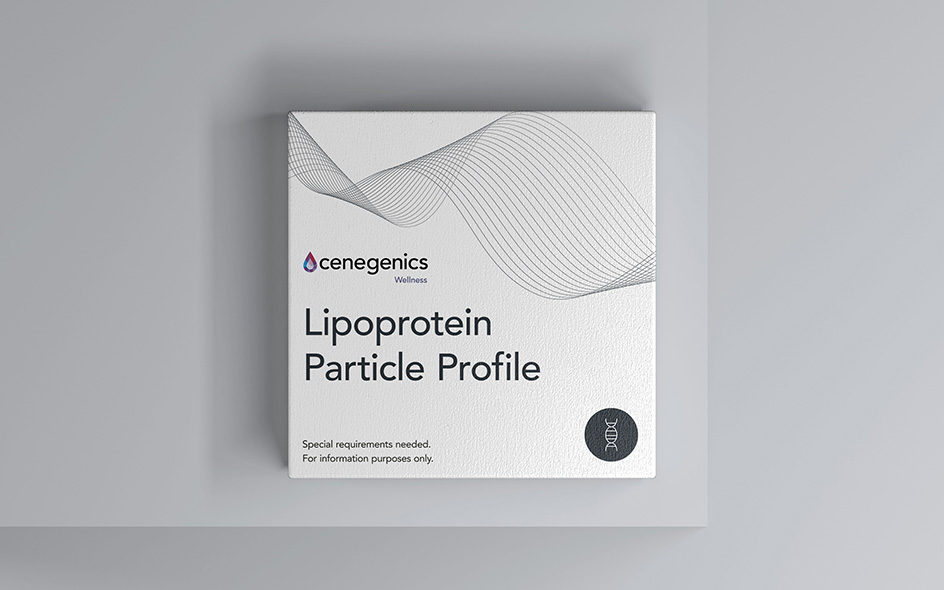01
Telomere Length - Biological Age
Telomere length test
A telomere test is a blood test that measures the length of your telomeres, an indicator that reveals an incredible amount of information about your cellular health, including the rate at which your body is aging.
What are telomeres?
Telomeres are structures (made up of DNA sequences and proteins) that protect the ends of chromosomes during each cell division. Their function is to guard the integrity of our DNA and prevent its mutation, preventing chromosomes from sticking together or losing important information.
As we age, and with each cell division, our telomeres successively shorten until they reach a point where their length is critical and cells can no longer divide. They then undergo a process called apoptosis (programmed cell death) or enter senescence (loss of function) [1].
Why is it important to measure my telomeres?
Telomere length and the rate of telomere shortening are considered key biomarkers of aging [2]. When telomeres become too short, cells stop replicating. This can impair regenerative capacity (the ability of cells to heal and repair) and cell viability (cell function) [3].
Progressive telomere shortening leads to senescence, cell death or oncogenic transformation (the mutation of benign to malignant cells that develop a certain type of cancer) of cells. Therefore, telomere length can determine the overall health, lifespan and rate of aging of an individual [4].
What is the use of knowing the length of my telomeres?
Slowing down and/or slowing down the aging process
At Cenegenics Wellness we measure telomere length to learn whether our clients' rate of aging is normal, accelerated or ideally slower, and help them manage their aging with scientific evidence and medical guidance.
Early warning of chronic diseases
Telomere length testing is a risk biomarker that functions as an early warning for heart disease, diabetes, certain types of cancer and other age-related diseases [5]. At Cenegenics Wellness we are proactive if the results warrant it, offering more time for interventions to prevent or delay the onset of these diseases, especially if there is a family history.
02
Test process
How are telomeres measured?
At Cenegenics Wellness we measure telomere length with Life Length's HealthTAV® test, the worldwide reference test for measuring cell biological age. The test is a simple blood sample that is prepared and sent for analysis to Life Length's laboratory in Madrid, Spain.
Life Length's HealthTAV® measures not only the average length, but also the length of each of the 4 telomeres in the 46 chromosomes of thousands of cells, with a patented method using Q-FISH(Quantitative Fluorescent in Situ Hybridization).
How accurate is the telomere measurement test?
The superiority of Life Length technology is based on its ability to accurately measure each individual telomere, allowing quantification of short telomeres. Simply measuring the mean - the average - telomere length of a population of cells is not sufficient to identify premature telomere shortening.
Life Length's HealthTAV® was founded on the technological basis initiated by Dr. Maria Blasco, director of the prestigious Spanish National Cancer Research Center (CNIO) and its measurement protocol is clinically validated (CLIA and ISO 15189).
Requirements:
- Type of sample: Plasma
- Preparation: No preparation or fasting is required.
- Frequency: We recommend repeating the analysis at least once a year, although periods of 6 months are considered optimal for detecting changes in telomere length.
03
Results
What is a good telomere length?
More than the absolute value of the length of our telomeres, what is important for our health is the rate of loss. A person who loses 35 base pairs instead of 150 base pairs per year, ages at a rate five times slower. At this point it is also important to mention that our cells have inherent mechanisms that repair and can even lengthen telomeres again.
The metric for assessing telomere length in an individual is the percentile of the normal range - which represents the shortest telomeres in each person - compared to the database.
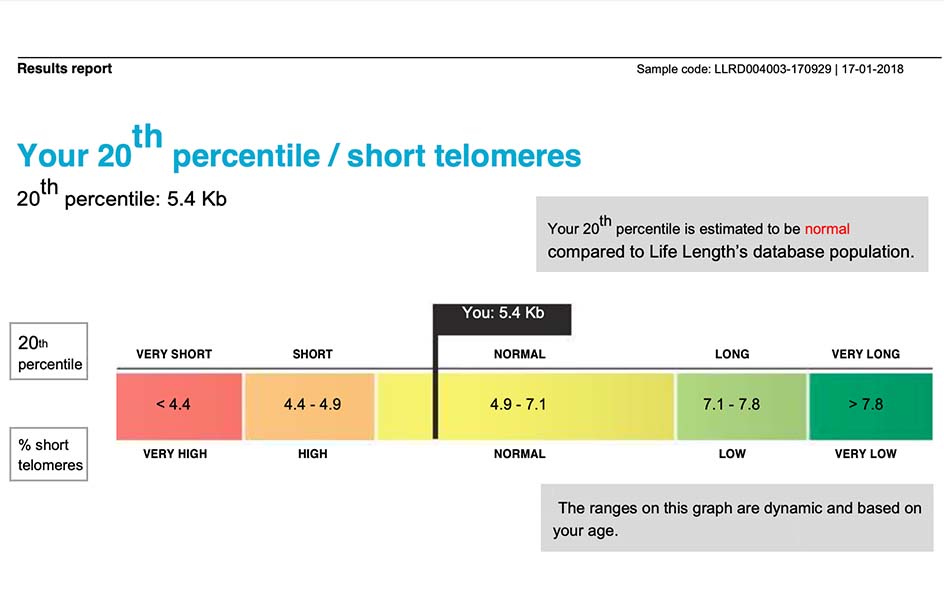
As a normal cellular process, telomere length decreases with age [6]. This will continue to happen throughout our lives as our cells continue to divide to support growth, fight disease, and repair injury.
Does telomere length reveal your biological age?
Each person ages at a different rate, regardless of the same chronological age. Telomeric length is one of the molecular markers most studied by the scientific community to estimate the degree of aging of an organism.
Life Length's HealthTAV® technology calculates biological age using an algorithm that considers each individual's chronological age group and weights it with their telomere length results.
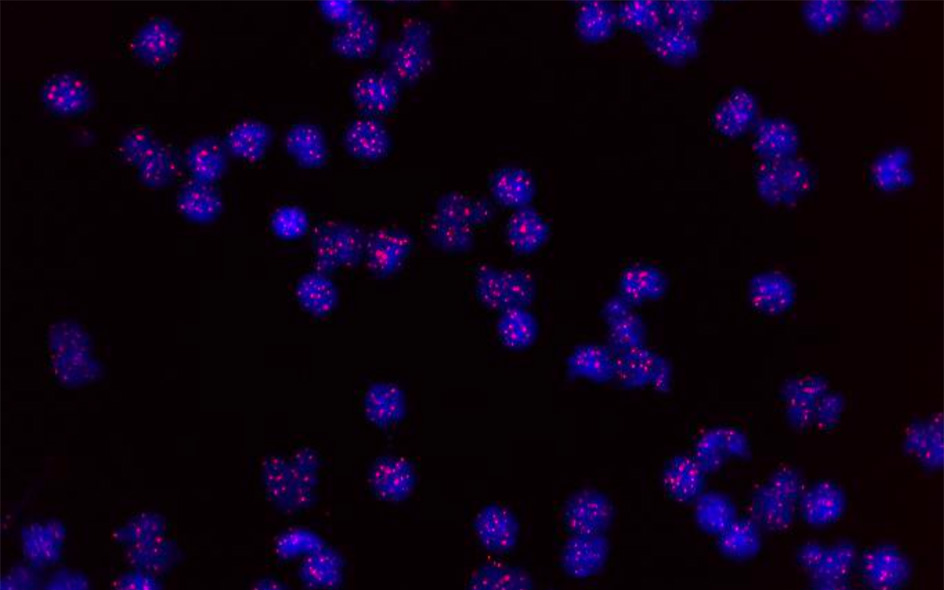
What factors shorten telomeres?
Telomere length is affected by a combination of factors including age [7], genetic and epigenetic makeup and environment [8], social and economic status [9], exercise [10], body weight [11], and smoking [11]. Some individuals may also be born with shorter telomeres or may have a genetic disorder that shortens telomeres. These individuals are at increased risk of developing premature coronary heart disease [12] and premature aging.
04
Optimal health
How can I protect my telomeres?
The most important thing we can do today to protect our telomeres is to adopt a healthy lifestyle. Our lifestyle has great potential to reduce the rate of telomere shortening or, at least, prevent their excessive wear and tear, which would delay the onset of age-associated diseases and increase longevity (length and quality of life).
Can telomeres be lengthened?
Although there are no products on the market that cause a net telomere lengthening effect, many products and supplements are currently being investigated that have a positive effect on the activation of telomerase, an enzyme responsible for telomere lengthening.
Activation of telomerase by natural molecules functions as a modulator that may play a role in reversing telomere shortening.
Where can I get a test to measure my telomere length?
Telomere analysis is a relatively new diagnostic test that is just beginning to be used in clinical applications, so its availability is limited. In addition, most commercial tests only measure mean telomere length - an insufficient measure to identify premature telomere shortening.
The worldwide reference test for measuring cell biological age is Life Length's HealthTAV®, as it is the only test that measures short telomeres - available in Mexico exclusively at Cenegenics Wellness.
Article written by: Paulina Alva, Precision Longevity Coach
References
- Blasco M. (2011). Maria Blasco: Keeping a cap on cancer and aging. Interview by Caitlin Sedwick. The Journal of Cell Biology, 192(3), 370-371. https://doi.org/10.1083/jcb.1923pi
- López-Otín, C., Blasco, M. A., Partridge, L., Serrano, M., & Kroemer, G. (2013). The Hallmarks of Aging. Cell, 153(6), 1194-1217 . https://doi.org/10.1016/j.cell.2013.05.039.
- Marión, R. M., & Blasco, M. A. (2010). Telomeres and telomerase in adult stem cells and pluripotent embryonic stem cells. Advances in experimental medicine and biology, 695, 118-131. https://doi. org/10.1007/978-1-4419-7037-4_9
- Babizhayev, M. A., Savel'yeva, E. L., Moskvina, S. N., & Yegorov, Y. E. (2011). Telomere length is a biomarker of cumulative oxidative stress, biologic age, and an independent predictor of survival and therapeutic treatment requirement associated with smoking behavior. American journal of therapeutics, 18(6), e209-e226. https://doi.org/10.1097/MJT.0b013e3181cf8ebb
- Vaiserman, A., & Krasnienkov, D. (2021). Telomere Length as a Marker of Biological Age: State-of-the-Art, Open Issues, and Future Perspectives. Frontiers in genetics, 11, 630186. https://doi.org/10.3389/fgene.2020.630186
- Valdes AM, Andrew T, Gardner JP, et al. (2005). Obesity, cigarette smoking, and telomere length in women. Lancet. 366:662-664.[PubMed][Google Scholar].
- Frenck, R. W., Jr, Blackburn, E. H., & Shannon, K. M. (1998). The rate of telomere sequence loss in human leukocytes varies with age. Proceedings of the National Academy of Sciences of the United States of America, 95(10), 5607-5610. https://doi. org/10.1073/pnas.95.10.5607
- Benetti, R., García-Cao, M., & Blasco, M. A. (2007). Telomere length regulates the epigenetic status of mammalian telomeres and subtelomeres. Nature genetics, 39 (2), 243-250. https://doi.org/10.1038/ng1952
- Cherkas, L. F., Hunkin, J. L., Kato, B. S., Richards, J. B., Gardner, J. P., Surdulescu, G. L., Kimura, M., Lu, X., Spector, T. D., & Aviv, A. (2008). The association between physical activity in leisure time and leukocyte telomere length. Archives of internal medicine, 168(2), 154-158. https://doi.org/10.1001/archinternmed.2007.39.
- Adams, J., Martin-Ruiz, C., Pearce, M. S., White, M., Parker, L., & von Zglinicki, T. (2007). No association between socio-economic status and white blood cell telomere length. Aging cell, 6(1), 125-128. https://doi.org/10.1111/j.1474-9726.2006.00258.x.
- Valdes, A. M., Andrew, T., Gardner, J. P., Kimura, M., Oelsner, E., Cherkas, L. F., Aviv, A., & Spector, T. D. (2005). Obesity, cigarette smoking, and telomere length in women. Lancet (London, England), 366(9486), 662-664. https://doi.org/10.1016/S0140-6736(05)66630-5
- Brouilette, S., Singh, R. K., Thompson, J. R., Goodall, A. H., & Samani, N. J. (2003). White cell telomere length and risk of premature myocardial infarction. Arteriosclerosis, thrombosis, and vascular biology, 23(5), 842-846. https://doi.org/10.1161/01.ATV.0000067426.96344.32.



